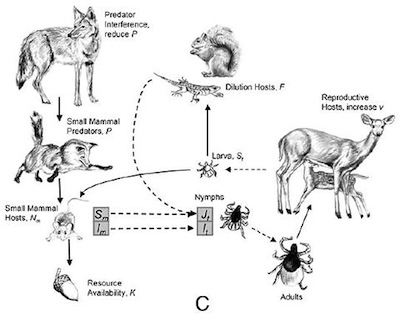Dr. Taal Levi's research on deer ticks and the role large and small mammals have in the transmission of Lyme Disease was the focus of the New York Times' June 18, 2012 Green Blog posting, "Predators, Prey and Lyme Disease."
The post discusses the recently published paper in the Proceedings of the National Academy of Sciences, "Deer, predators, and the emergence of Lyme Disease," authored by Taal Levi, A. Marm Kilpatrick, Marc Mangel, and Chris Wilmers. Below is an excerpt from the post:
While people used to blame deer for the spread of Lyme disease, Dr. Levi said that scientific evidence has indicated that deer probably aren’t significant transmitters of B. burgdorferi bacteria because their systems tend to quickly flush it out. But “some hosts, like white-footed mice, don’t clear it at all,” he said, which means the bacteria hang around long enough to be transmitted to ticks.
Dr. Levi hypothesized that because these small animals are prey, their abundance – and the spread of the Lyme disease bacteria within them – depends on the abundance of their predators. In the study, he and his colleagues did a computer analysis of known cases of Lyme disease and population data for red foxes — a key predator of rodents — in four states with a high prevalence of the disease: Minnesota, Wisconsin, Pennsylvania and Virginia. For good measure, they also compared deer populations with the tally of Lyme disease cases in Wisconsin, Pennsylvania, Virginia and New York.
Upon completing the Doctoral Program in Environmental Studies this spring, Taal began a post-doctoral research fellowship with the Cary Institute of Ecosystem Studies in New York. He plans to continue his research on the transmission of Lyme Disease, examining the predator/prey relationship in disease ecology.

